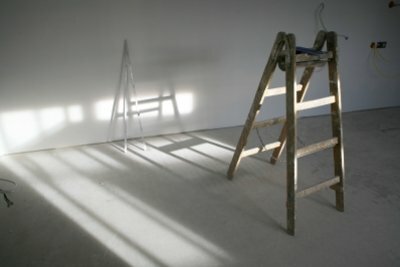Primer or deep primer?
Are you planning a renovation? Regardless of whether you are considering painting, wallpapering or tiling your walls - one consideration is very important in advance: What is the texture of your walls like? As a rule, a pretreatment is necessary before the actual work, either in the form of a primer or a deep primer. You can read here where the differences are and when you need what.

What you need:
- Primer or deep primer
- Brush or Tassel
Even if the primer and deep primer are often mentioned in the same breath when it comes to the pretreatment of surfaces, there are still differences.
Primer as a "mediator" between different materials
- As a rule, you need a primer if your walls are non-absorbent or only slightly absorbent. In contrast to the deep primer, it only slightly penetrates the surface and takes on the function of an adhesive for the new layers to be applied.
- Haftgrund can be used on a wide variety of materials - concrete, screed, plasterboard - but it is particularly necessary for tile substrates, marble or similar non-absorbent materials.
- For you as a self-renovator, this means, for example, that you can work on painted surfaces (old oil sockets, for example) or for gluing Tiles absolutely need an adhesive primer on tiles. An adhesive primer is also well suited for "blocking" (dried) water stains. After application, these no longer penetrate the newly painted layer of paint.
- The primer is painted on and, depending on the processing instructions, you can continue working on it immediately or after it has dried. Tiefengrund is used in the same way by painting it on, but its function is different.
Various circumstances can lead to interior walls being clad with plasterboard ...
Deep primer reduces the absorbency of surfaces
- Priming your surfaces with a deep primer is usually recommended if you have highly absorbent materials that you want to continue working on. Often you only see something like this when you have removed old wallpaper from the wall, for example, and then have to find that the plaster underneath is already trickling heavily and is very porous and loose, so very is "sandy".
- In contrast to Haftgrund, Tiefengrund, as the name suggests, penetrates deep into (too) highly absorbent, often porous and loose substrates. Its job is to solidify such materials and reduce their absorbency.
- On the one hand, this has the effect that new layers of paint, wallpaper glue, putty or plaster are applied Hold such "crumbling" substrates well, on the other hand, the use of deep primer also ensures less Material consumption.
- If you have your walls prime, then whiten them a bit beforehand and use less paint when applying paint.
So, before you start your renovation work, take a good look at your subfloor to decide what you need. Tiefengrund is almost always recommended, especially in old buildings. On the other hand, you absolutely need a primer for some work and substrates, but less for others.
How helpful do you find this article?


